{ DOWNLOAD AS PDF }
ABOUT AUTHOR
Nayan Jain*
Mandsaur Institute of Pharmacy,
Mandsaur, MP, India
ABSTRACT
Sexual dysfunction or sexual disorder is difficulty experienced by a couple or an individual during any stage of a normal sexual activity, including physical pleasure, preference, desire, arousal or orgasm. Sexual arousal disorders were previously known as impotence in men and frigidity in women, though these have now been replaced with less judgmental terms. The causes vary considerably but include a possible decrease in the production of normal estrogen in women or testosterone in both men and women. Causes of dysfunction are aging, fatigue, pregnancy, medications or psychiatric conditions, such as depression and anxiety.
Herbal medicines may cure or prevent certain ailments. However, there are very little recorded data available to support the dose, efficacy, side effects and interactions. Because the safety and efficacy of herbal remedies they are likely to be used then synthetic medicines. The amount of active ingredients in herbals may vary among preparations. Thus, standardization of herbal medicines is required.
[adsense:336x280:8701650588]
Reference Id: PHARMATUTOR-ART-2636
|
PharmaTutor (Print-ISSN: 2394 - 6679; e-ISSN: 2347 - 7881) Volume 7, Issue 01 Received On: 22/11/2018; Accepted On: 14/12/2018; Published On: 01/01/2019 How to cite this article: Jain, N. 2019. Study of Herbal Drugs for the treatment of Sexual Dysfunction. PharmaTutor. 7, 1 (Jan. 2019), 11-24. DOI:https://doi.org/10.29161/PT.v7.i1.2019.11 |
SEXUAL DYSFUNCTION:
Sexual dysfunction or sexual disorder is difficulty experienced by a couple or an individual during any stage of a normal sexual activity, including physical pleasure, preference, desire, arousal or orgasm.
According to the DSM – 5, sexual dysfunction requires a person to feel extreme distress and interpersonal strain for a minimum of six months. (Nolen Hoeksema, Susan) The causes vary considerably but include a possible decrease in the production of normal estrogen in women or testosterone in both men and women. Other causes may be aging, fatigue, pregnancy, medications or psychiatric conditions, such as depression and anxiety. While a number of causes for low sexual desire are often cited, only some of these have ever been the object of empirical research. Sexual dysfunctions can have a profound impact on an individual's perceived quality of sexual life. ( Eden K.J., Wylie K.R.)
The term sexual disorder may not only refer to physical sexual dysfunction, but to paraphilias as well; this is sometimes termed disorder of sexual preference. (Johnson, William H. Masters) Sexual dysfunction can take many forms – it’s not limited to a lack of interest in sex or erectile dysfunction, often referred to as a low libido. Sexual dysfunction can involve an inability to maintain an erection, pain during intercourse, or difficulty experiencing an orgasm. Though there are many causes of diminished libido and sexual dysfunction in women and men, there are also many ways to increase libido and rekindle the joy of sex once you identify the problem.
The sexual response cycle traditionally includes excitement, orgasm, plateau, and resolution. Arousal and desire are both parts of the excitement phase of the sexual response. While research suggests that sexual dysfunction is common, about 31 percent of men and 43 percent of women report some degree of difficulty, it is a topic that many people are hesitant to discuss with their physicians. It is important to share your concerns with your partner and physicians.
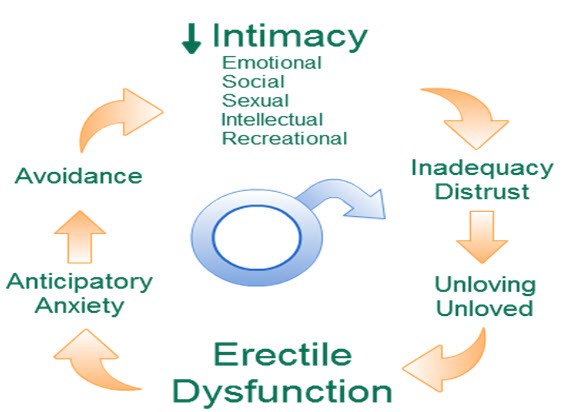
Figure No.1: Erectile dysfunction
CLASSIFICATION OF SEXUAL DYSFUNCTION:
Sexual dysfunction is classified into four categories:
1. Arousal disorders — inability to become physically aroused or excited during sexual activity
2. Desire disorders — lack of sexual desire or interest in sex
3. Pain disorders — pain during intercourse
4. Orgasm disorders — delay or absence of orgasm (climax)
Sexual desire disorders:
Sexual desire disorders or decreased libido are characterized by an absence or lack for some period of time of sexual desire or libido for sexual fantasies or of sexual activity. The condition ranges from a general lack of sexual desire to a lack of sexual desire for the partner. The condition may have started after a period of sexual functioning or the person may always have had no or low sexual desire.
The causes vary considerably but include a possible decrease in the production of testosterone in both men and women or normal estrogen in women. Other causes may be aging, pregnancy, medications, fatigue, or psychiatric conditions, such as anxiety and depression. (Maurice, William, https://my.clevelandclinic.org/health/diseases/9121-sexual-dysfunction)
Sexual arousal disorders:
Sexual arousal disorders were previously known as impotence in men and frigidity in women, though these have now been replaced with less judgmental terms.
Impotence is now known as erectile dysfunction, and frigidity has been replaced with a number of terms describing specific problems that can be broken down into four categories:
• Pain during intercourse
• Lack of desire
• Lack of arousal and
• Lack of orgasm.
For both women and men, these conditions can manifest themselves as an aversion to, and avoidance of sexual contact with a partner.
In men, there may be complete or partial failure to maintain or attain an erection, or a lack of sexual excitement and pleasure in sexual activity.
There may be physiological origins to these disorders, such as lack of vaginal lubrication or decreased blood flow.
The etiology of this condition is unknown. It is believed to be a pathology of either the autonomic nervous systems or immune system. It is defined as an uncommon disease by the NIH but the prevalence is unknown. There is no known cure or treatment. (Hartley H (2006)
Erectile dysfunction:
Impotence or Erectile dysfunction is a sexual dysfunction characterized by the inability to maintain an erection of the penis. There are various underlying causes, such as damage to the Nervi erigentes which delays or prevents erection, or diabetes as well as cardiovascular disease, which simply decreases blood flow.
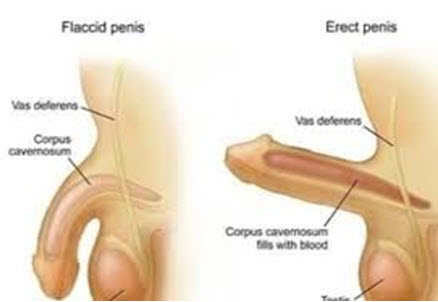
Figure No. 2: Erectile dysfunction
The erectile dysfunction may be caused by physically or psychologically. Psychologically caused erectile dysfunction can often be helped by almost anything that the patient believes in; there is a very strong placebo effect. Physical damage is much more severe. One leading physical cause of erectile dysfunction is continual or severe damage taken to the Nervi erigentes. These nerves course besides the prostate arising from the sacral plexus and can be damaged in prostatic and colorectal surgeries. (Montague DK, Jarow JP)
Diseases are also common causes of erectile dysfunctional, mostly in men. Diseases such as –
• Cardiovascular disease
• Kidney failure
• Vascular disease
• Multiple sclerosis and
• Spinal cord injuries are the source of erectile dysfunction.
Due to its embarrassing nature and the shame felt by sufferers, the subject was taboo (prohibited) for a long time and is the subject of many urban legends.
Folk remedies have been advertised widely since the 1930s. The introduction of perhaps the first pharmacologically effective remedy for impotence, Sildenafil (Viagra), in the 1990s caused a wave of public attention, propelled in part by the news-worthiness of stories about it and heavy advertising.
It is estimated that around 30 million men in the United States and 152 million men worldwide suffer from erectile dysfunction. However, social stigma, low health literacy, and social taboos lead to under reporting which makes an accurate prevalence rate hard to determine. (NIH. Consensus Development Panel on Impotence., Ayta I, Mckinlay J, Krane R (1999))
The Latin term ‘impotentia coeundi’ describes simple inability to insert the penis into the vagina. It is now mostly replaced by more precise terms.
Orgasm disorders
Orgasm disorders, specifically anorgasmia, present as persistent delays or absence of orgasm following a normal sexual excitement phase in at least 75% of sexual encounters. The disorder can have physical, psychological, or pharmacological origins. SSRI antidepressants are a common pharmaceutical culprit, as they can delay orgasm or eliminate it entirely. A common physiological culprit of anorgasmia is menopause, where one in three women report problems obtaining an orgasm during sexual stimulation following menopause. (Nolen-Hoeksema, Susan)
Further to this, there is what is called post-orgasm disorders, which would better categorize the condition: post orgasm illness syndrome.
Premature ejaculation
Premature ejaculation is when ejaculation occurs before the partner achieves orgasm, or a mutually satisfactory length of time has passed during intercourse. There is no correct length of time for intercourse to last. Premature ejaculation is thought to occur when ejaculation occurs in less than two minutes from the time of the insertion of the penis. (Waldinger M.D., Berenden H.H) For a diagnosis, the patient must have a chronic history of premature ejaculation, poor ejaculatory control, and the problem must cause feelings of dissatisfaction as well as distress the patient, the partner or both.
Historically attributed to psychological causes, new theories suggest that premature ejaculation may have an underlying neurobiological cause which may lead to rapid ejaculation.
Sexual pain disorders
Sexual pain disorders affect women almost exclusively and are also known as dyspareunia (painful intercourse) or veganism.
Dyspareunia may be caused by insufficient lubrication (vaginal dryness) in women. Poor lubrication may result from insufficient excitement and stimulation, or from hormonal changes caused by menopause, pregnancy, or breastfeeding. Irritation from contraceptive creams and foams can also cause dryness, as can fear and anxiety about sex.
It is unclear exactly the causes of veganism’s, but it is thought that past sexual trauma (such as rape or abuse) may play a role.
Another female sexual pain disorder is called vulvodynia or vulvar vestibulitis. In this condition, women experience burning pain during sex which seems to be related to problems with the skin in the vulvar and vaginal areas. The cause is unknown. (Balon R, Segraves RT)
Sexual dysfunction classified into two categories based on gender:
1. In men
• Erectile dysfunction (ED)
• Low libido
• Ejaculation problems
2. In women
a. Vaginal dryness
b. Difficulty achieving orgasm
c. Low libido
d. Pain during sex
CAUSES OF SEXUAL DYSFUNCTION:
There are a number of causes of sexual dysfunction. They are grouped into two categories:
• Physical causes and
• Psychological causes
• Physical causes:
There are many physical causes of sexual dysfunction.
The following diseases and conditions can lead to problems with sexual function:
• Urological infections or cancer
• Diabetes
• Cardiovascular disease
• High blood pressure
• High cholesterol
• Hormonal imbalances
• Alcoholism
• Drug abuse
• Neurological disorders
• Chronic diseases, such as kidney failure
• Nerve damage.
Many medications can cause problems with normal sexual functioning, including blood pressure medications and antidepressants, as can alcohol and recreational drug use. Some medical treatments can affect sexual function as well. For example, some surgical procedures can cause nerve damage that can affect sexual function.
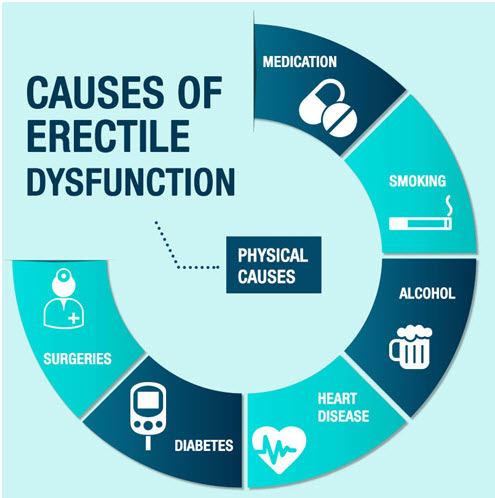
Figure No.3: Physical causes of Sexual dysfunction
NOW YOU CAN ALSO PUBLISH YOUR ARTICLE ONLINE.
SUBMIT YOUR ARTICLE/PROJECT AT editor-in-chief@pharmatutor.org
Subscribe to Pharmatutor Alerts by Email
FIND OUT MORE ARTICLES AT OUR DATABASE
Psychological causes:
Many people have psychologically induced sexual dysfunction. Things like concern about sexual performance, feelings of guilt about sexual desire and activity, relationship problems, depression, stress, anxiety self-esteem or body image issues, and the effects of past sexual trauma, such as rape, molestation or a negative sexual experience can all have a negative effect on sexual function. (Erectile dysfunction” Mayoclinic)
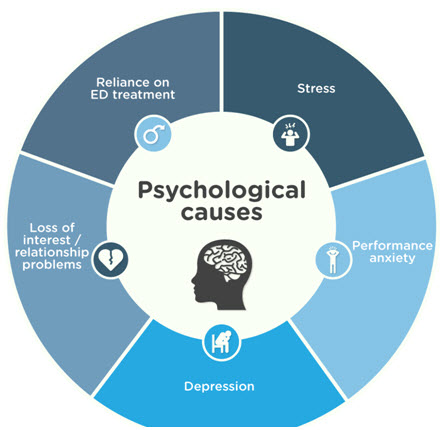
Figure No.4: Psychological causes
LIST OF DISORDERS:
DSM
The 4th edition of the Diagnostic and Statistical Manual of Mental Disorders lists the following sexual dysfunctions are:
• Hypoactive sexual desire disorder
• Sexual aversion disorder (avoidance of or lack of desire for sexual intercourse)
• Female sexual arousal disorder (failure of normal lubricating arousal response)
• Male erectile disorder
• Female orgasmic disorder
• Male orgasmic disorder
• Premature ejaculation
• Dyspareunia
• Veganism’s
Additional DSM sexual disorders that are not sexual dysfunctions include:
• Paraphilias
• PTSD due to genital mutilation or childhood sexual abuse
Other sexual problems
• Sexual dissatisfaction (non-specific)
• Lack of sexual desire
• Anorgasmia
• Impotence
• Sexually transmitted diseases
• Delay or absence of ejaculation, despite adequate stimulation
• Inability to control the timing of ejaculation
• Inability to relax vaginal muscles enough to allow intercourse
• Inadequate vaginal lubrication preceding and during intercourse
• Burning pain on the vulva or in the vagina with contact to those areas
• Unhappiness or confusion related to sexual orientation
• Trans-sexual and transgender people may have sexual problems before or after surgery.
• Persistent sexual arousal syndrome
• Sexual addiction
• Hypersexuality
• All forms of female genital cutting
• Post-orgasmic diseases.
DIAGNOSIS OF SEXUAL DYSFUNCTION:
Diagnosis of Erectile dysfunction:
The diagnosis of ED involves a clinical evaluation including medical/physical examination as well as documentation of sexual and psychosocial history. Erectile dysfunction is one of many symptoms of sexual disorders including premature ejaculation, increased latency time associated with age, psycho-sexual relationship problems, and loss of libido. During the diagnosis of ED, it is important that other sexual dysfunctions be recognized and taken into account. A few validated instruments are used in diagnosing ED, grading its severity, and assessing treatment satisfaction. Some examples of such instruments are the International Index of Erectile Function (IIEF), the modified 5-item version of IIEF (IIEF–5), and the Erectile Dysfunction Index of Treatment Satisfaction (EDITS). The IIEF is a self-administered 15-item questionnaire consisting of five distinct domains: erectile function, orgasmic function (total score range 0–10), sexual desire (total score range 2–10), intercourse satisfaction (total score range 0–15), and overall satisfaction (total score range 2– 10).
Recommendations based on biochemical investigation may consist of hormonal screening to detect hypogonadism or other underlying common diseases such as hyperprolactinemia, diabetes, and dyslipidemia.
Other methods that may be used are urine analysis, blood count, lipid levels, or prostate-specific antigen (PSA) concentration. There are also specialized evaluation techniques such as duplex ultrasonography, penile tumescence studies, RigiScan, test injections, audio-visual stimulation, and penile brachial index measurement. (Tsertsvadze A., Yazdi F)
HERBAL V/S ETHICAL DRUGS:
• About 8% patient admitted in the hospitals due to side effects of the synthetic or ethical drugs. About one lakh people died due to these toxicities. These figures of killed people by pharmaceutical drugs are the three-time more than killed by the drunken drivers.
• Because of the lack of education about drugs, each year thousands of people died due to over the counter drugs Deaths or hospitalizations due to herbs are so rare that they are hard to find.
• Therefore, people every year turn to herbal medicine because they believe plant remedies are free from undesirable side effects. Although herbal medicines are generally considered to be safe and effective, conventionally it is said that if a drug is effective, it would have side effects. Hence, herbal remedies as drugs either have adverse effects or are not effective.
• Synthetic drugs address symptoms caused by specific diseases as understood by scientific pathology. However, a herbal medicine usually direct towards aiding the body’s own healing process. Herbal medicines usually act gently support the systems and processes that have become deficient or attempt to help remove excesses that have become preponderant. Symptom relief is only a section of medicinal plants therapeutic strategies. The approach of herbs to these conditions causes moistening of dry synovia, stimulation of circulation in the affected regions, facilitation of elimination via kidneys and hepatic routes, dietary modification of metabolism, etc
• Many people who seek medicinal plants have already been involved in pharmaceutical therapies. Medicinal plants may act as agonists or potentiate some other drugs. Herbalists usually do not like to treat the primary presenting symptom undergoing drug treatment but rather concentrate on supporting other systems and functions stressed by the primary symptom. This allows the body to recover its strength and healing potential so it can then direct these capabilities toward repairing the presenting condition. (Saxena A., Prakash P., Porwal M)

Figure No. 5: Herbal v/s ethical drugs
TREATMENT OF SEXUAL DYSFUNCTION:
FIRST LINE THERAPY FOR SEXUAL DYSFUNCTION:
First line therapy:
Oral medications for Erectile dysfunction under first-line therapy are as follows:
1. Sildenafil (Viagra)
2. Tadalafil (Adcirca, Cialis)
3. Vardenafil (Levitra, Staxyn)
Sildenafil :
Sildenafil, sold as the brand name Viagra among others, is a medication used to treat erectile dysfunction and pulmonary arterial hypertension. Its effectiveness for treating sexual dysfunction in women has not been demonstrated.
It is effective from 30 to 60 min after administration. Its efficacy is reduced after a heavy meal due to prolonged absorption. It is administered in 25, 50,100 mg doses. Starting dose is 50 mg and should be adopted according to the patient’s response and side effects. (Stuckey BG, Jadzinsky MN)

Figure No.6: Sildenafil tablet
Side effects:
• Chest pain or pressure, pain spreading to your jaw or shoulder
• Nausea
• Sweating
• Vision changes or sudden vision loss
• Erection is painful or lasts longer than 4 hours
Tadalafil:
Tadalafil is a PDE5 inhibitor marketed in pill form for treating erectile dysfunction, for the treatment of pulmonary arterial hypertension and it is sold under the trade names Adcirca, Cialis in India.
It is effective from 30 min after administration, with peak efficacy after about 2 hours. Efficacy is maintained for upto36 hours and is not affected by food. It is administered in 10 and 20 mg doses, the starting dose is 10 mg and should be adopted according to the patient’s response and side effects. (Brock GB, McMahon CG)
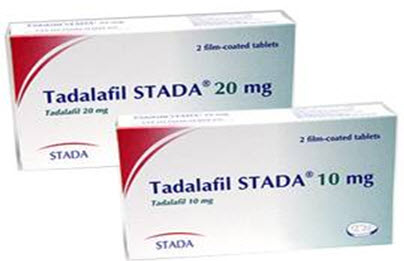
Figure No.7: Tadalafil tablet
Side effects :
• Flushing (redness or warmth of the face, neck, or chest)
• Headaches
• Stomach upset
• Diarrhea
• Flu-like symptoms (such as stuffy nose, sneezing, or sore throat)
• Memory problems
• Muscle or back pain
• Nausea
• low blood pressure
• Dizziness
• Blurred vision and changes in color vision
• Abnormal ejaculation and
• Prolonged erections
Vardenafil:
Vardenafil is a PDE₅ inhibitor used for treating erectile dysfunction that is sold under the trade names Levitra, Staxyn in India.
It is effective from 30 min after administration. Its efficacy is reduced after a heavy meal (>57% Fat). It is administered in 5, 10 and 20 mg doses, the starting dose is 10 mg and should be adapted according to the patient’s response and side effects. (Taylor, D.A. (2006). )
Side effects:
• Headache
• Flushing (warmth or redness in your face, neck, or chest),
• Runny or stuffy nose,
• Stomach upset,
• heartburn,
• Dizziness,
• back pain, or
• Nausea.
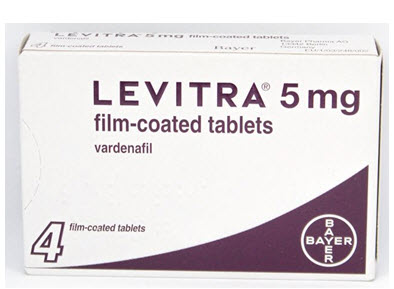
Figure No.8: Vardenafil tablet
HERBAL TREATMENT:
Herbal treatment drugs for the ED are as follows:
1) Panax ginseng
2) Rhodiola rosea
3) Maca
4) Yohimbine
5) Ginkgo bilbo
6) Mondia whitei
7) Watermelon seeds
8) Sandalwood oil
9) Cananga odorata
10) Horny goat weed
11) Beta vulgaris
12) Kava
NOW YOU CAN ALSO PUBLISH YOUR ARTICLE ONLINE.
SUBMIT YOUR ARTICLE/PROJECT AT editor-in-chief@pharmatutor.org
Subscribe to Pharmatutor Alerts by Email
FIND OUT MORE ARTICLES AT OUR DATABASE
1. Panax ginseng
Classification:
Kingdom : Plantae
Phylum : Eudicots
Class : Asterids
Order : Apiales
Family : Araliaceae
Genus : Panax
Species : ginseng; notoginseng; quiquefolius;
vietnamensis; waangianus; zingiberensis;
pseudoginseng; stipuleanatus
(a) Biological source: peeled and dried root of Panax ginseng
(b) Geographical source: South Korea is Korean ginseng (P. ginseng), while ginseng produced in China includes P. ginseng and South China ginseng (P. notoginseng) Ginseng produced in Canada and the United States is mostly American ginseng (P. quinquefolius)
(c) History: Panax ginseng also known as herbal Viagra, Panax ginseng (red ginseng) has solid research behind it. Researchers reviewed seven studies of red ginseng and ED in 2008. Dosages ranged from 600 to 1,000 milligrams (mg) three times daily. They concluded there was “suggestive evidence for the effectiveness of red ginseng in the treatment of erectile dysfunction.” (Taylor, D.A. (2006)
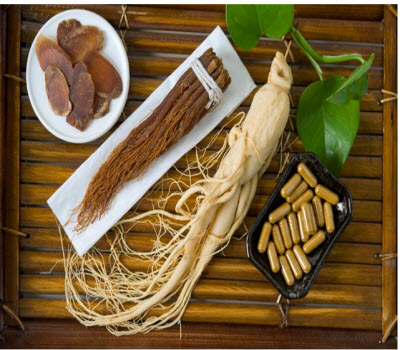
Figure No. 9: Roots of Panax ginseng
(d) Description:
Ginsenosides are one element present in Panax ginseng extract that has action at the cellular level to improve erection.
The action of Panax ginseng appears to be most effective for those with high lipids in their blood and metabolic syndrome. This herb is known to have anti-inflammatory action, improve lung function, and improve blood flow in other diseases. All characteristics that may reduce ED.
2. Rhodiola rosea
Classification:
Kingdom : Plantae
Class : Magnoliopsida
Order : Rosales
Family : Crassulaceae
Genus : Rhodiola
Species : rosea
(a) Biological Source: Thick root of Rhodiola rosea may reach 5 to 35 centimetres
(b) Geographical source: The Mountains of Central Asia, Eastern North America and Mountainous parts of Europe.
Rhodiola also improves aspects of sexual health. In one study of women with amenorrhea, Rhodola helped a majority of women to regain proper healthy menstrual regularity.
In another study of 35 middle-aged men with erectile dysfunction, 25 improved significantly after taking an extract of Rhodiola. Increasingly we find some of these products in pharmacies. (Kim S.)
The majority of human studies show the best results when Rhodiola rosea extract is taken between 200 - 600 milligrams daily, standardized to approximately 2 percent rosavin, or a total of 5 percent of the total group of rosavins. This herb has been shown to improve energy and reduce fatigue. (Spasov AA, Wikman GK), (Furmanowa M, Oledzka H)
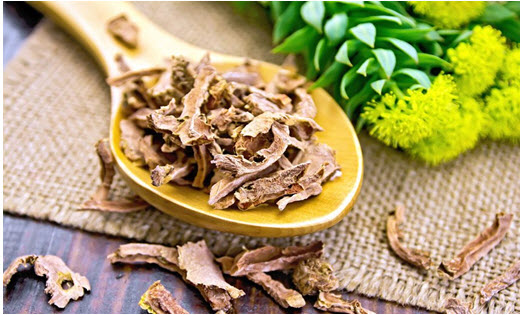
Figure No.10: Root of Rhodiola rosea
3. Maca
Classification:
Kingdom : Plantae
Phylum : Eudicots
Class : Rosids
Order : Brassicales
Family : Brassicaceae
Genus : Lepidium
Species : meyenii
(a) Biological Source : Dried bark extraction
(b) Geographical source: Andes Mountains in Peru
(c) Description: Maca is the common name for Lepidium meyenii, a plant in the broccoli family. ‘Maca root’ refers to the root of the plant, which resembles a turnip.
Maca is divided into categories based on the color of the root, which can be red, black, pink or yellow. Maca has historically been grown in Peru.
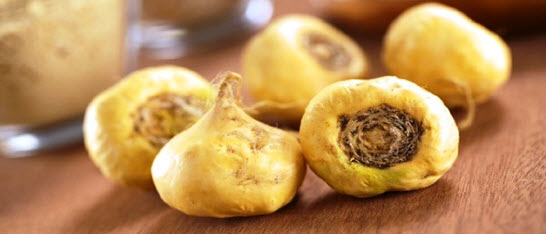
Figure No.11: Dried bark of Maca
Maca has traditionally been used as an aphrodisiac. It has been used all over the world and affects both genders. It does not work through hormones and does not increase testosterone or estrogen. Men supplementing maca have been known to experience an increase in sperm production.
Maca also appears to be a potent suppressor of prostate hypertrophy with potency similar to finasteride, a synthetic drug for the treatment of enlarged prostates. Preliminary research also suggests maca can protect the brain from damage, improve bone health, and even improve cognitive ability in healthy people. (Zheng BL)
4. Yohimbine
Classification:
Kingdom : Plantae
Order : Gentianales
Family : Rubiaceae
Genus : Pausinystalia
Species : johimbe
(a) Biological source: Dried bark of Pausinystalia johimbe
(b) Geographical source: Central Africa
(c) Part used: Dried bark
(d) Description: Yohimbine is a herbal remedy made from the bark of the Yohimba tree. Yohimbine is a chemical found in Yohimba tree bark known as an alkaloid. Yohimbine is a herbal remedy for erectile dysfunction or impotence. It’s made from the bark of the West African Yohimba tree. Yohimbine works by dilating the blood vessels of your penis, helping you to get and keep an erection. (https://www.zavamed.com/uk/yohimbine.html), ( https://www.dred.com/ie/yohimbine.html)
Yohimbine is thought to work as:
• a stimulant (increasing adrenaline levels in your body)
• a medicine to prevent heart attacks
• an anti-depressant
• a weight loss aid (by inhibiting a process in body that stops fat burning)
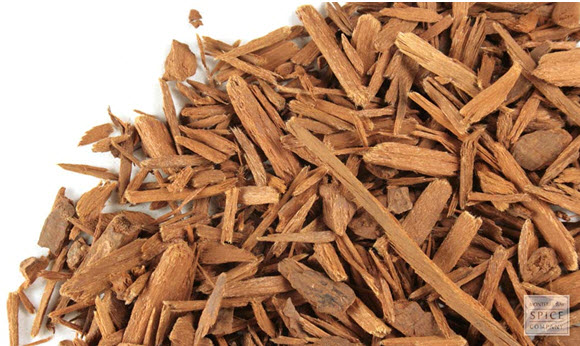
Figure No.12: Dried bark of Pausinystalia johimbe
5. Ginkgo biloba
Kingdom : Plantae
Class : Ginkgoopsida
Order : Ginkgoales
Family : Ginkgoaceae
Genus : Ginkgo
Species : biloba
(a) Biological source : Dried leaves of Ginkgo biloba
(b) Geographical source: Cultivated in China
(c) Part used: Leaves
(d) Descrption: Ginkgo is an herb that is used in Chinese medicine that’s thought to improve blood flow. "Any ED treatment that improves blood flow may help. An erection is just “blood in and blood out”. However, the evidence that ginkgo can improve blood flow in ED is limited, and most experts say the jury is still out. In addition, ginkgo can increase the risk of bleeding problems if combined with certain medications, such as warfarin. It may help but talk to your doctor before trying it.
Ginkgo biloba is a popular supplement and one of the top-selling herbal medicines. Ginkgo biloba extract is collected from the dried green leaves of the plant and is available as liquid extracts, capsules, and tablets. The therapeutic properties of the ginkgo plant are said to include treatment for blood disorders and memory problems, enhancement of cardiovascular function and to improve eye health.
Gingko contains high levels of flavonoids and terpenoids, antioxidants that provide protection against oxidative cell damage from harmful free radicals. In this way, antioxidants are believed to help reduce the risk of cancer. (https://www.everydayhealth.com/erectile-dysfunction/sexy-supplements-what-really-works.aspx) , (https://www.medicalnewstoday.com/articles/263105.php)
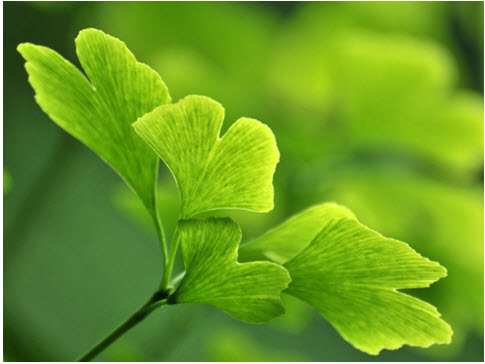
Figure No.13: Dried leaves of Ginkgo biloba
6. Mondia whitei:
Classification
Kingdom : Plantae
Order : Gentianales
Family : Apocynaceae
Genus : Mondia
Species : whitei
(a) Biological Source : Dried leaves of Mondia whitei
(b) Geographical source: Cultivated in South African
(c) Part used: Leaves & Roots
(d) Description: Mondia whitei is from the Periplocaceae family and its root has been used by many traditional medicine practitioners in Ghana for the management of ED and infertility. There seem to be little empirical scientific data to support this ethno medical use. (O.N.K. Martey)
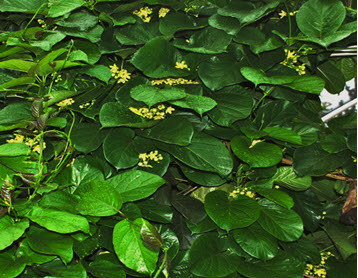
Figure No.14: Dried leaves of Mondia whitei
7. Watermelon seeds
Classification
Kingdom : Plantae
Order : Cucurbitales
Family : Cucurbitaceae
Genus : Citrullus
Species : lanatus
(a) Biological source : Dried seeds of citrullus lanatus
(b) Geographical source: Cultivated in Kalahari Desert of Africa, China, Egypt, Indonesia, India.
(c) Part used: Seeds
(d) Description: Watermelon is a natural source of citrulline. Citrulline is an amino acid that may support better erections. Viagra works by increasing blood flow to the penis, allowing a man to more easily get an erection when he is aroused. Citrulline may do the same thing, although it works in a different way to Viagra.
Preliminary research suggests that the body may convert citrulline to another amino acid, called arginine. Arginine converts to nitric oxide. Nitric oxide opens the blood vessels wider, increasing blood flow to the penis and improving erection because watermelon is mostly water, the highest concentrations of citrulline come from concentrated watermelon juice. (https://www.medicalnewstoday.com/articles/320440.php)

Figure No.15: Dried seeds of Citrullus lanatus
NOW YOU CAN ALSO PUBLISH YOUR ARTICLE ONLINE.
SUBMIT YOUR ARTICLE/PROJECT AT editor-in-chief@pharmatutor.org
Subscribe to Pharmatutor Alerts by Email
FIND OUT MORE ARTICLES AT OUR DATABASE
8. Sandalwood oil
Classification:
Kingdom : Plantae
Family : Santalaceae
Class :
Order :
Genus : Santalum
Species : album
(a) Biological Source : Obtain by distillation of heartwood of Santalum album, family Santalaceae.
(b) Geographical source: Found in India, Malaysia. Sandalwood tree is an Evergreen plant, 10-12 m high found widely distributed in India.
(c) Part used: Wood
(d) Description: Sandalwood oil is said to have powerful aphrodisiac properties. The oil is believed to have the capacity to balance moods, stimulate feelings of intimacy and may very well help in ED. The oil has long been known to be very effective in improving blood flow. This is one of the many reasons why it is touted as a viable treatment for Erectile Dysfunction. In addition to improving the circulation, the oil also regulates the heartbeat too. This makes a wonderful combination for a healthy sex life.
Using sandalwood oil on a regular basis will boost blood flow to the penis. This can be achieved through gentle massage. (https://www.thesummitvanuatu.com/sandalwood-oil-erectile-dysfunction)

Figure No.16: Sandalwood
9. Canangna odorata:
Classification:
Kingdom : Plantae
Order : Magnoliales
Family : Annonaceae
Genus : Cananga
Species : odorata
(a) Biological source : Floweres of Cananga odorata
(b) Geographical source: Cultivated in Myanmar, Thailand, Cambodia, Laos, Malaysia, Indonesia, Philippines, and Papua New Guinea to Northern Australia.
(c) Part used: Flower
(d) Descritption: Also known the cananga tree, it is valued for the perfume extracted from its flowers, called ylang-ylang. The essential oil is used in aromatherapy. It is believed to relieve high blood pressure, normalize sebum secretion for skin problems, and is considered to be an aphrodisiac.
Ylang ylang essential oil works on a few levels to help treat ED. It has euphoric properties that provide a sense of well-being and enhanced self-esteem. Ylang-ylang is used to treat frigidity, depression, and anxiety, essential oils can help you relax. This may help you to unwind and connect with more intimacy.(http://fano-guide.blogspot.com/2012/05), (https://www.healthline.com/health/erectile-dysfunction/essential-oils-for-erectile-dysfunction)
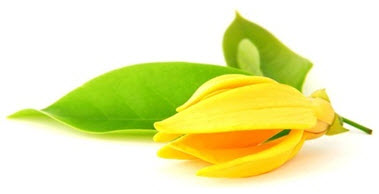
Figure No.17: Flower of Cananga odorata
10. Epimedium
Classification:
Kingdom : Plantae
Order : Ranunculales
Family : Berberidaceae
Genus : Epimedium
Species : grandiflorum
(a) Biological source : Flowers of Epimedium grandiflorum Linn.
(b) Geographical source: The majority of the species are endemic to China, with smaller numbers elsewhere in Asia, and a few in the Mediterranean region.
(c) Part used: Flowers
(d) Description: Icariin inhibits the activity of the PDE5 that’s blocking dilation of the arteries in the penis. This allows blood to fill the arteries and the three cylinders in the penis and create an erection. The prescription medication Sildenafil (Viagra) works in much the same way.
The side effects for horny goat weed are minor when it is taken over a few month’s time. There may be nosebleeds, dizziness, and rapid heartbeat. Large amounts taken at once can result in spasms and breathing problems. (https://www.healthline.com/health/erectile-dysfunction/horny-goat-weed)
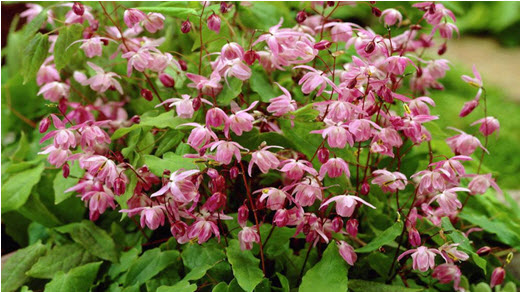
Figure No.18: Flowers of Epimedium grandiflorum
11. Beta vulgaris
Classification:
Kingdom : Plantae
Class : Magnoliopsida
Order : Caryophyllales
Family : Chenopodiaceae
Genus : Beta
Species : vulgariss
a) Biological source : Tap root portion of Beta vulgaris
b) Geographical source: growing wild on the seashores of southern Britain, through Europe and Asia to the East Indies.
c) Part used: Tap root
d) Description: Beet juice may contribute to this because it is high in nitrates, and the body turns these nitrates into nitric oxide. Beets also appear to affect other circulation factors of ED. High blood pressure may influence ED, as it may make it difficult for blood to flow to the penis to enable an erection.
Any evidence supporting beet juice for ED is anecdotal. There are no scientific studies on beet juice for ED. One cause of ED is high blood pressure, because it may damage blood vessels and disrupt blood flow to the penis. (https://www.medicalnewstoday.com/articles/320675.php), (https://www.healthline.com/health/erectile-dysfunction/beet-juice-for-ed)

Figure no.19 Tap root of Beta vulgaris
12. Kava
Classification:
Kingdom : Plantae
Order : Piperales
Family : Piperaceae
Genus : Piper
Species : methysticum
(a) Biological source : Root of Piper methylsticum
(b) Geographical source: Cultivated on numerous Islands of Micronesia, Melanesia, Polynesia, and Hawaii.
(c) Part used: Roots
(d) Description: Kava has a highly researched and documented ability to calm the nerves and reduce stress in both men and women. One of the most common causes of poor libido and sexual dissatisfaction is anxiety, tension, and other stress-related issues caused by relationships, work, or even the thought of the sexual performance in itself.
The mind is a very powerful tool for improving health, but it can also be a factor in our own self-induced sexual dysfunctions if we let it. While Kava can help sexual dysfunction caused by self-induced mental issues, it will not show much, if any improvement, over an actual diagnosed case of ED.(https://health.howstuffworks.com/sexual-health/sexuality/vitamins-herbs-sex-life4.htm)
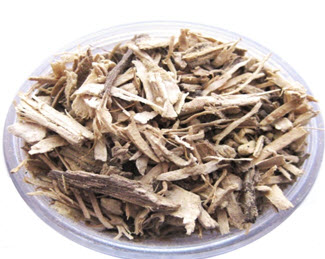
Figure No.20: Roots of Piper methylsticum
CONCLUSION:
Sexual dysfunction or sexual disorder is the difficulty experienced by a couple or an individual during any stage of a normal sexual activity, including physical pleasure, preference, desire, arousal or orgasm
Sexual dysfunction can involve an inability to maintain an erection, pain during intercourse, or difficulty experiencing an orgasm. Research suggests that sexual dysfunction is common, about 31 percent of men and 43 percent of women report some degree of difficulty, it is a topic that many people are hesitant to discuss with their physicians.
The causes vary considerably but include a possible decrease in the production of normal estrogen in women or testosterone in both men and women. Causes of dysfunction are aging, fatigue, pregnancy, medications or psychiatric conditions, such as depression and anxiety.
Herbal medicines may cure or prevent certain ailments. However, there are very little recorded data available to support the dose, efficacy, side effects and interactions. Because the safety and efficacy of herbal remedies they are likely to be used then synthetic medicines. The amount of active ingredients in herbals may vary among preparations. Thus, standardization of herbal medicines is required.
Through this review, further research is necessary in favour of erectile dysfunction.
REFERENCES:
1. Ayta I, Mckinlay J, Krane R (1999); The likely worldwide increase in erectile dysfunction between 1995 and 2025; BJU Int.; 84 (1); 50–56.
2. Balon R, Segraves RT, eds. (2005); Handbook of Sexual Dysfunction. Taylor & Francis. ISBN 9780824758264.
3. Brock GB, McMahon CG, Chen KK, Costigan T, Shen W, Watkins V, et al. (2002); Efficacy and safety of tadalafil for the treatment of erectile dysfunction: Results of integrated analyses. J Urol ; 168 (4 Pt 1); 1332-1336.
4. Eden K.J., Wylie K.R. (2009); Quality of sexual life and menopause; Women's Health; 5(4); 385-396.
5. Erectile dysfunction; Mayoclinic, www.mayoclinic.org/diseases-conditions/erectile-dysfunction/symptoms-causes/syc-20355776
6. Furmanowa M, Oledzka H, Michalska M, Sokolnicka I, Radomska D (1993); Rhodiola rosea L. (Roseroot): In Vitro Regeneration and the Biological Activity of Roots ; Medicinal and Aromatic Plants VIII ; 33 ; 412-426
7. Goldstein I, Young JM, Fischer J, Bangerter K, Segerson T, Taylor T. Vardenafil (2003); a new phosphodiesterase type 5 inhibitor, in the treatment of erectile dysfunction in men with diabetes. A multicenter double-blind placebo-controlled fixed-dose study; Diabetes Care ; 26(3); 777-83
8. Hartley H (2006); The 'pinking' of Viagra culture: Drug industry efforts to create and repackage sex drugs for women; Sexualities; 9(3); 365
9. https://my.clevelandclinic.org/health/diseases/9121-sexual-dysfunction accessed on accessed on 15/10/18
10. https://www.medicalnewstoday.com/articles/320440.php 3/11/18
11. https://www.thesummitvanuatu.com/sandalwood-oil-erectile-dysfunction accessed on 3/11/18
12. http://fano-guide.blogspot.com/2012/05 accessed on 3/11/18
13. https://www.healthline.com/health/erectile-dysfunction/essential-oils-for-erectile-dysfunction accessed on 4/11/18
14. https://www.healthline.com/health/erectile-dysfunction/horny-goat-weed accessed on 4/11/18
15. https://www.medicalnewstoday.com/articles/320675.php accessed on 4/11/18
16. https://www.healthline.com/health/erectile-dysfunction/beet-juice-for-ed accessed on 4/11/18
17. https://health.howstuffworks.com/sexual-health/sexuality/vitamins-herbs-sex-life4.htm accessed on 4/11/18
18. https://www.zavamed.com/uk/yohimbine.html accessed on 15/10/18
19. https://www.dred.com/ie/yohimbine.html accessed on 15/10/18
20. https://www.everydayhealth.com/erectile-dysfunction/sexy-supplements-what-really-works.aspx accessed on 2/11/18
21. https://www.medicalnewstoday.com/articles/263105.php accessed on 2/11/18
22. Johnson, William H. Masters [and] Virginia E. (1970); Human sexual inadequacy (2. print ed.); London: Churchill.
23. Kim S; Korean Red Ginseng for Erectile Dysfunction; Health line; https://www.healthline.com/health/erectile-dysfunction/korean-red-ginseng
24. Maurice, William (2007); Sexual Desire Disorders in Men; in ed. Leiblum, Sandra; Principles and Practice of Sex Therapy (4th ed.); The Guilford Press; New York
25. Montague DK, Jarow JP, Broderick GA, Dmochowski RR, Heaton JP, Lue TF, Milbank AJ, Nehra A, Sharlip ID (July 2005); Chapter 1: The management of erectile dysfunction: an AUA update; J. Urol.; 174 (1); 230–39.
26. Nolen-Hoeksema, Susan. "Abnormal Psychology". McGraw-Hill Humanities/Social Sciences/Languages; 6 Edition; 2013; p.368.
27. Nolen Hoeksema, Susan (2014). Abnormal Psychology. 2 Penn Plaza, New York, NY 10121: McGraw-Hill. pp. 366–367.
28. NIH. Consensus Development Panel on Impotence. (1993); Impotence; Journal of the American Medical Association; 270; 83–90
29. O.N.K. Martey and X. He, (2010) ; Possible Mode of Action of Mondia whitei: An Aphrodisiac used in the Management of Erectile Dysfunction. Journal of Pharmacology and Toxicology, 5; 460-468
30. Saxena A., Prakash P., Porwal M., Sissodia N., Sharma P. (2012); Erectile dysfunction: A review and herbs used for its treatment; IJGP 6(2) ; 110-116
31. Spasov AA, Wikman GK, Mandrikov VB, Mironova IA, Neumoin VV (2000); A double-blind, placebo-controlled pilot study of the stimulating and adaptogenic effect of Rhodiola roseaSHR-5 extract on the fatigue of students caused by stress during an examination period with a repeated low-dose regimen; Phytomedicine; 7(2); 85-89.
32. Stuckey BG, Jadzinsky MN, Murphy LJ, Montorsi F, Kadioglu A, Fraige F, et al. (2003) \; Deerochanawong C. Sildenafil citrate for treatment of erectile dysfunction in men with type 1 diabetes: Results of a randomized controlled trial. Diabetes Care; 26(2); 279-284.
33. Taylor, D.A. (2006). Ginseng, the Divine Root: The Curious History of the Plant That Captivated the World.
34. Tsertsvadze A., Yazdi F., eds. (2009); Diagnosis and Treatment of Erectile Dysfunction; AHRQ Publication No. 08(09)-E016; 12-13
35. Waldinger M.D., Berenden H.H., Blok B.F., et al (1998); Premature Ejaculation and Serotengeric Anti-depressants - Induced Delayed Ejaculation: The Involvement of the Serotonergic System. Behavioural Brain Res; 92(2): 111-118
36. Zheng BL, et al (2000); Effect of a lipidic extract from lepidium meyenii on sexual behavior in mice and rats; Urology; 55(4); 598-602.
NOW YOU CAN ALSO PUBLISH YOUR ARTICLE ONLINE.
SUBMIT YOUR ARTICLE/PROJECT AT editor-in-chief@pharmatutor.org
Subscribe to Pharmatutor Alerts by Email
FIND OUT MORE ARTICLES AT OUR DATABASE










